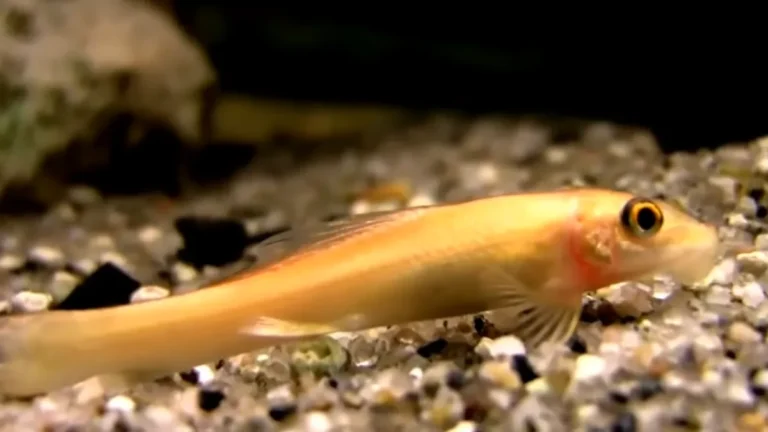Understanding Goldfish Temperature Shock Symptoms
Hey there, fish lovers! Buffy here, your go-to fish care specialist, ready to dive into the world of Goldfish Temperature Shock Symptoms. You know, we all want our finned friends to swim happily ever after, but sometimes, life throws a curveball – like temperature shock!
Don’t worry, though; I’ve got your back, and together, we’ll learn all about the signs, prevention, and remedies to keep your goldfish feeling chill and happy. So, let’s get started!
Understanding the Importance of Proper Water Temperature
Okay, folks, before we dive into the nitty-gritty of temperature shock symptoms, let’s chat about why water temperature is a big deal for our goldfish buddies. Just like you wouldn’t want to live in an igloo or a sauna, goldfish have their temperature preferences too. It’s their comfort zone, their happy place!
What Are the Symptoms of Temperature Shock in Goldfish?
Alrighty, time to face the monsters – the symptoms of temperature shock. When our fishy friends experience sudden temperature changes, they might show some worrisome signs. Let’s talk about them:
Rapid Behavior Changes: How Goldfish React to Temperature Fluctuations
Goldfish can be quite the characters, and when they’re stressed from temperature shock, their behavior might go through some wild swings. Keep an eye out for these telltale signs:
- Lethargy: Ever seen your goldfish lounging around like they’re on a spa day? Well, if they suddenly become super sluggish and seem out of it, it could be a sign of temperature shock.
- Erratic Swimming: Picture a fishy version of a roller coaster ride – that’s what erratic swimming looks like! If your goldfish is darting around like they’ve had one too many cups of espresso, it might be their way of coping with sudden temperature changes.
Visible Physical Changes: Goldfish’s Body and Fin Reactions
Let’s face it – a lot goes on with our goldfish’s fins and bodies when they’re feeling the temperature blues. Look out for these changes:
Pale Coloring:
So, you know those moments when you’re so freaked out that you go pale as a ghost? Goldfish can do that too! When they’re stressed, their coloring might turn paler than usual, like they’ve seen a ghost or something.
Clamped Fins:
Imagine your goldfish having a bad hair day, and they just clamp their fins tight against their body. Not a good sign, folks. Clamped fins can be a signal of temperature shock stress.
Gasping at the Surface:
Now, if you suddenly feel like you can’t catch your breath, you’d probably gasp, right? Well, goldfish might do the same! When they’re stressed out, they might be gasping for air at the water’s surface.
Loss of Appetite: How Temperature Shock Can Impact Feeding Behavior
You know the saying, “I just can’t eat when I’m stressed”? Well, goldfish can relate! If your finned buddy suddenly loses their appetite and doesn’t want to nibble on their favorite fishy treats, it could be a sign of temperature shock.
Unusual Hiding Behavior: Seeking Shelter to Cope with Stress
When things get tough, we all need a safe space, right? Goldfish are no different! If your goldfish is hiding in their favorite nook or cranny and seems to avoid socializing, they might be feeling stressed and seeking shelter to cope.
What Causes Temperature Shock in Goldfish?
Okay, peeps, let’s talk about the villains causing all this temperature shock drama. The primary culprit is sudden changes in water temperature, and here’s how it goes down:
- Adding Cold Water to the Tank: Hey, I get it – you might want to top up your fish’s tank with fresh water, but adding cold water without acclimating them can be quite the shocker.
- Drastic Water Temperature Swings: Picture this: your goldfish is living their best life in a cozy tank, and suddenly, bam! The temperature takes a nosedive or spikes up like there’s no tomorrow. That’s a big no-no for your fishy pals!
How to Prevent Temperature Shock in Goldfish?
Now that we’ve identified the baddies causing all the trouble, let’s figure out how to keep them at bay. Prevention is always better than having to do damage control, right?
- Gradual Water Temperature Adjustment: Ta-da! The magic solution is here. If you need to change the water temperature, do it gradually. Slow and steady wins the fishy race!
- Using a Thermometer: Aha! Here’s a handy tool for all fish caregivers – a trusty thermometer. It’ll help you keep an eye on that water temperature and save your goldfish from any nasty surprises.
- Proper Tank Placement: Location, location, location! Keep your goldfish’s tank away from direct sunlight and drafts, so they don’t have to endure extreme temperature fluctuations.
- Be Mindful of Seasonal Changes: Hey, Mother Nature likes to switch things up, and that includes weather changes. Be ready to adjust the tank temperature according to the seasons.
What to Do If Your Goldfish Experiences Temperature Shock?
Okay, so your goldfish is showing signs of temperature shock. Time to grab that Slayer instinct and act quickly to help them out!
Identify the Symptoms: Recognizing Temperature Shock in Your Goldfish
First things first – let’s play detective! Recognizing the symptoms is crucial, so keep an eye out for the rapid behavior changes, visible physical changes, loss of appetite, and unusual hiding behavior we talked about earlier.
Act Quickly: Immediate Steps to Help Your Fish Recover
- Isolate the Fish: If you spot any temperature shock symptoms, it’s time to create a calm and stress-free environment for your goldfish. You might want to move them to a separate tank.
- Maintain Optimal Water Quality: Frequent water checks and adjustments are your new BFFs. Make sure the water quality is top-notch to help your goldfish cope with the shock.
- Gradually Raise the Temperature: Slowly does it! Increase the water temperature gradually over a period of time until it reaches the ideal range for your goldfish. Remember, we don’t want any more shockers!
FAQs (Frequently Asked Questions)
Can a sudden drop in water temperature be fatal for goldfish?
Unfortunately, yes. A sudden temperature drop can be extremely stressful and potentially fatal for our finned friends. That’s why it’s crucial to keep an eye on the water temperature and make adjustments carefully.
How long does it take for goldfish to recover from temperature shock?
The recovery time varies depending on the severity of the shock and how quickly you take action. With proper care and attention, many goldfish can bounce back within a few days to a week.
Can temperature shock cause long-term damage to goldfish?
In some cases, temperature shock can have lasting effects on a goldfish’s health. It may weaken their immune system or impact their growth. Providing consistent care and a stress-free environment can aid in their recovery.
What is the ideal water temperature range for goldfish?
Generally, goldfish thrive in water temperatures between 65°F to 75°F (18°C to 24°C). However, keep in mind that specific goldfish varieties may have different temperature preferences, so be sure to do your research!





